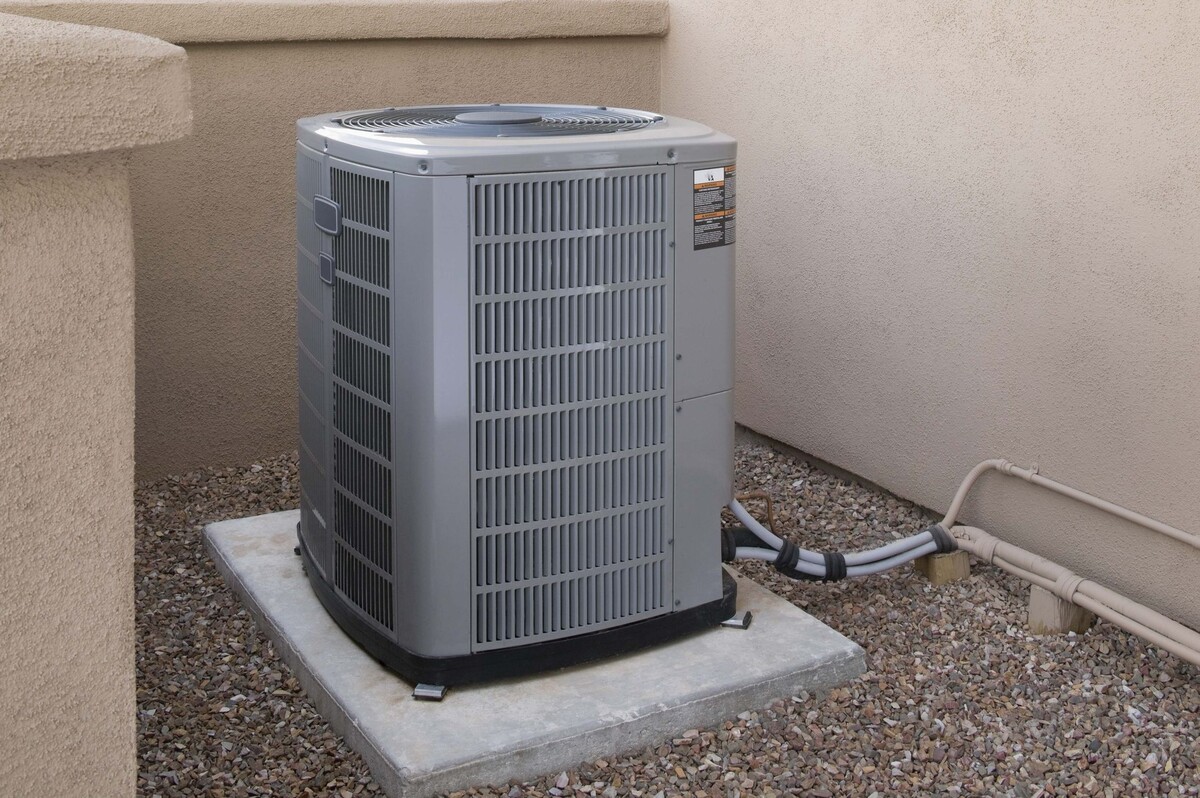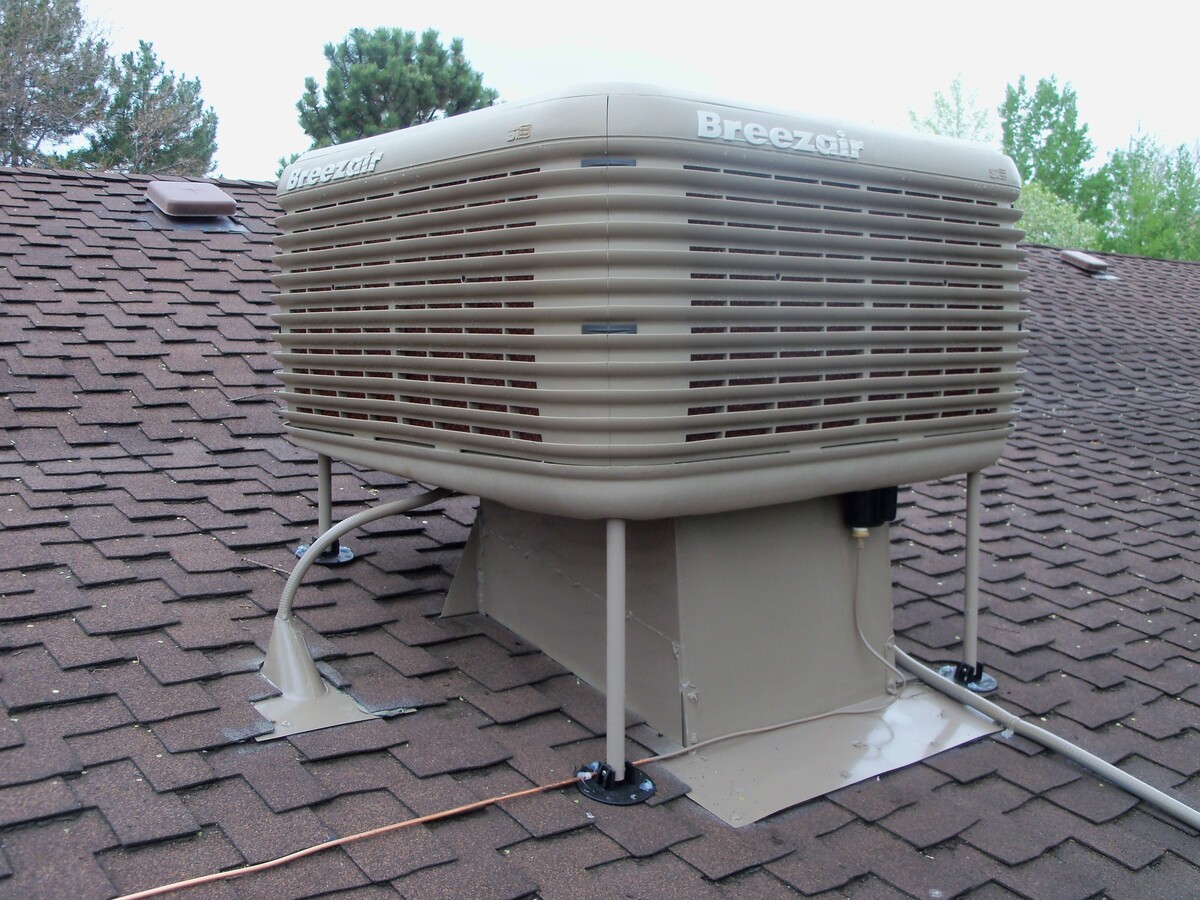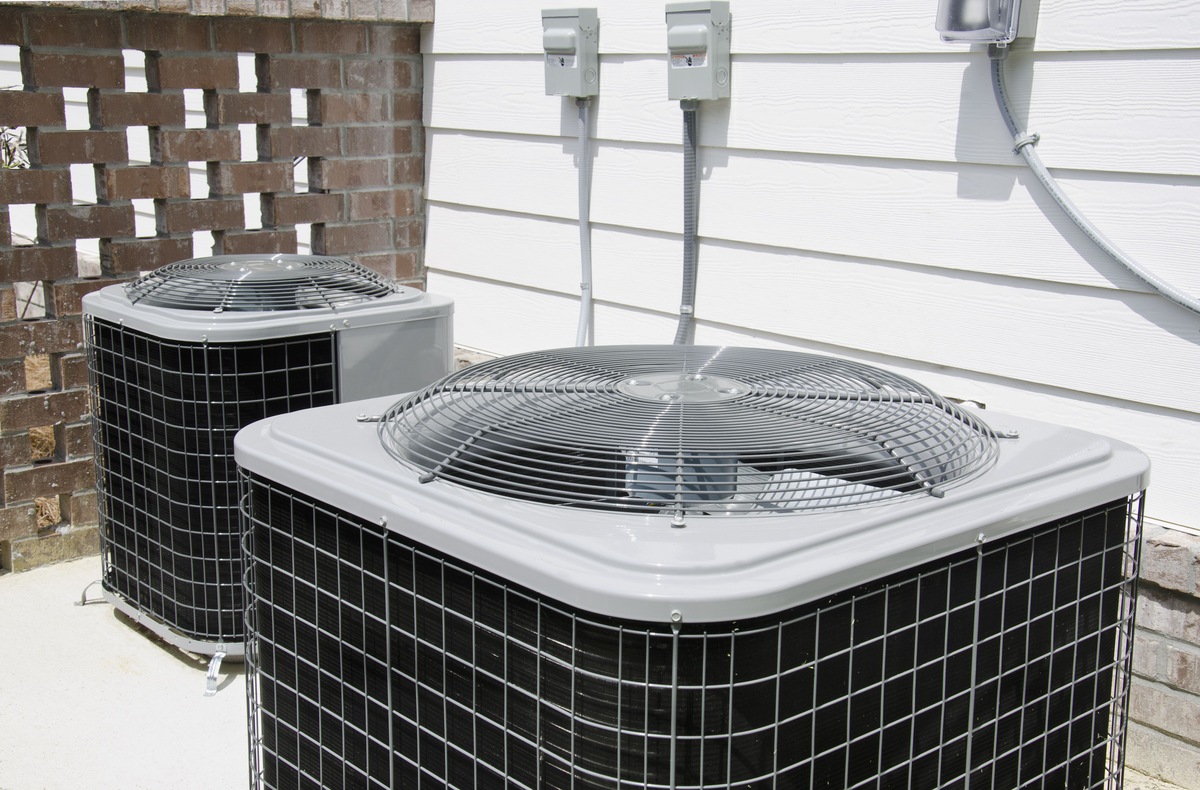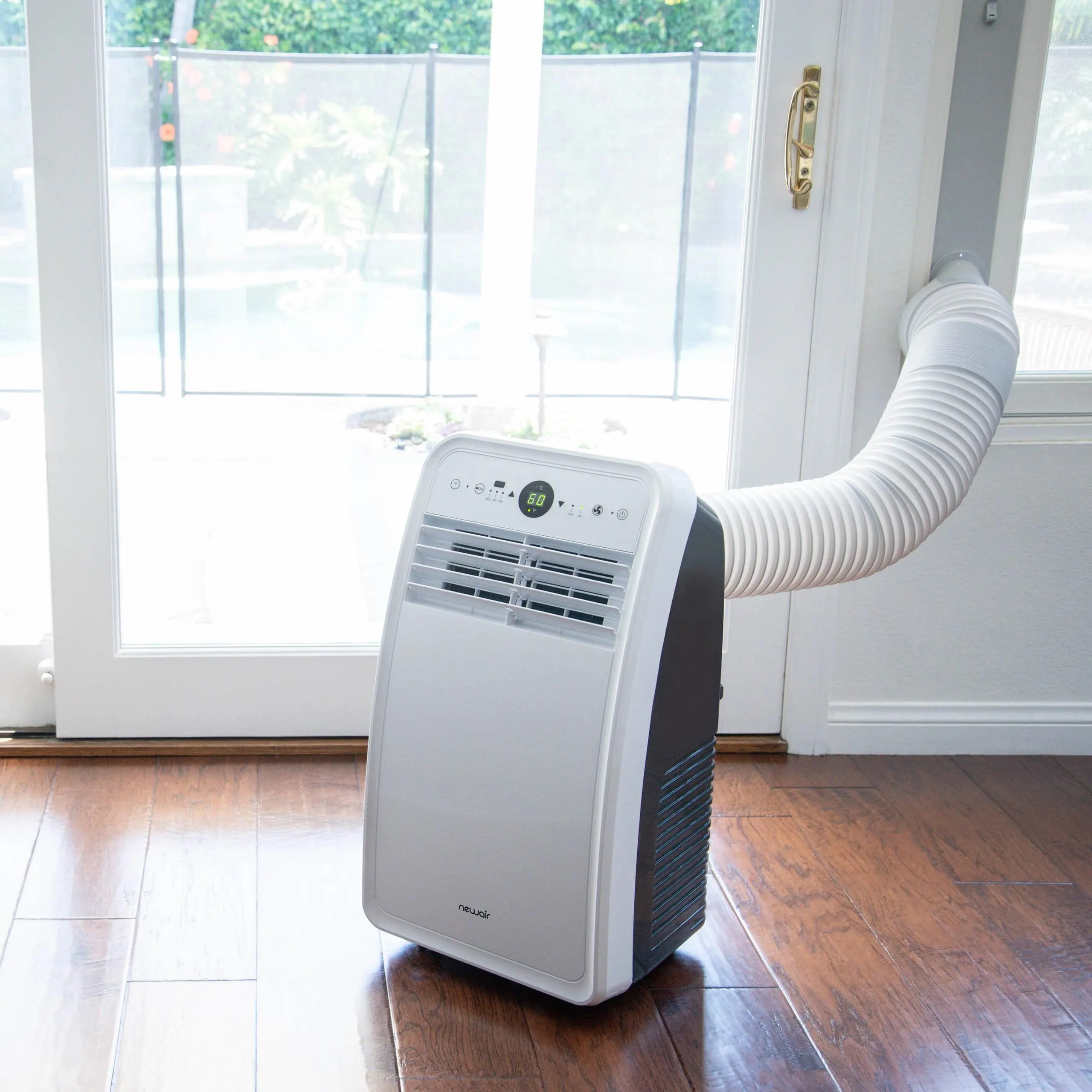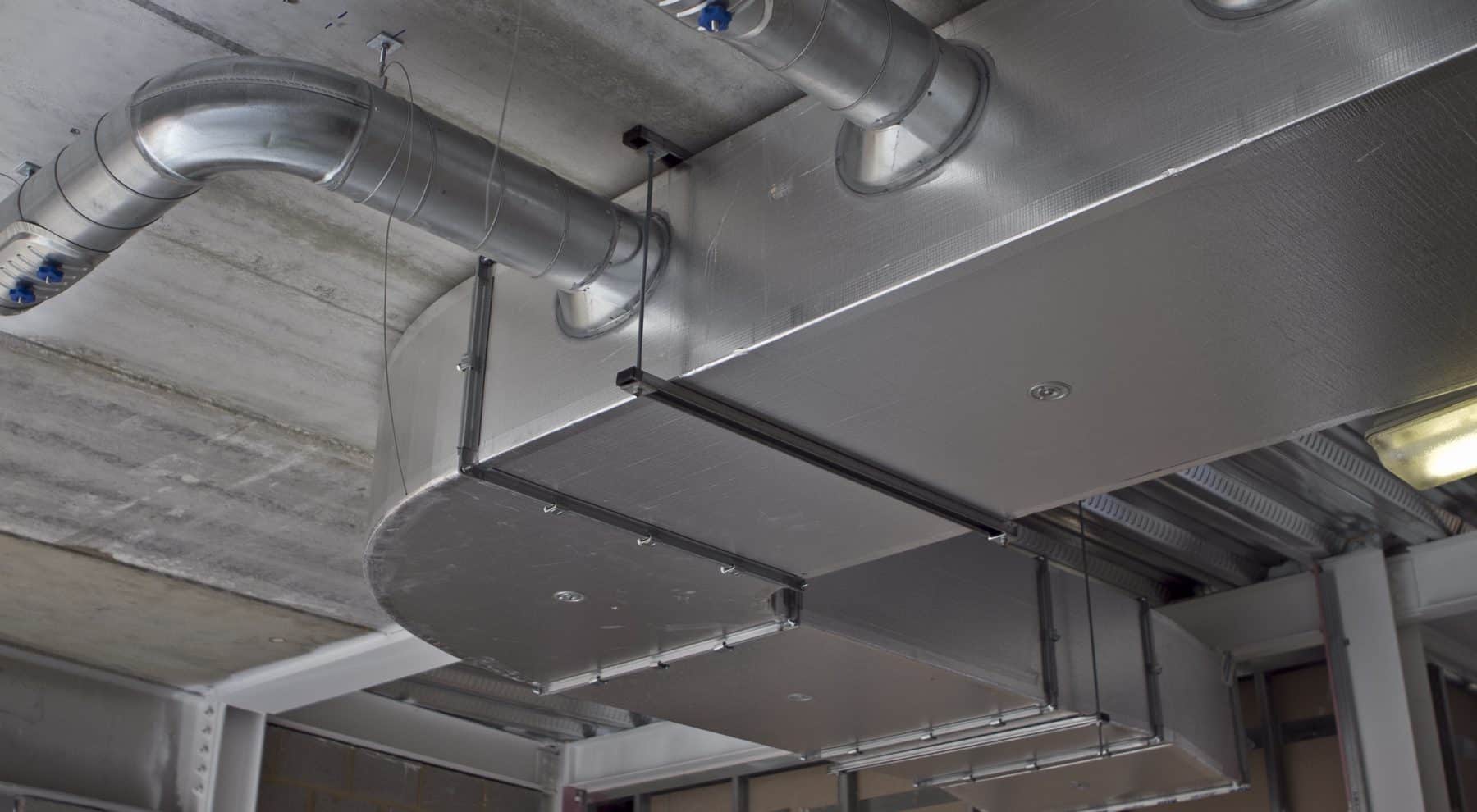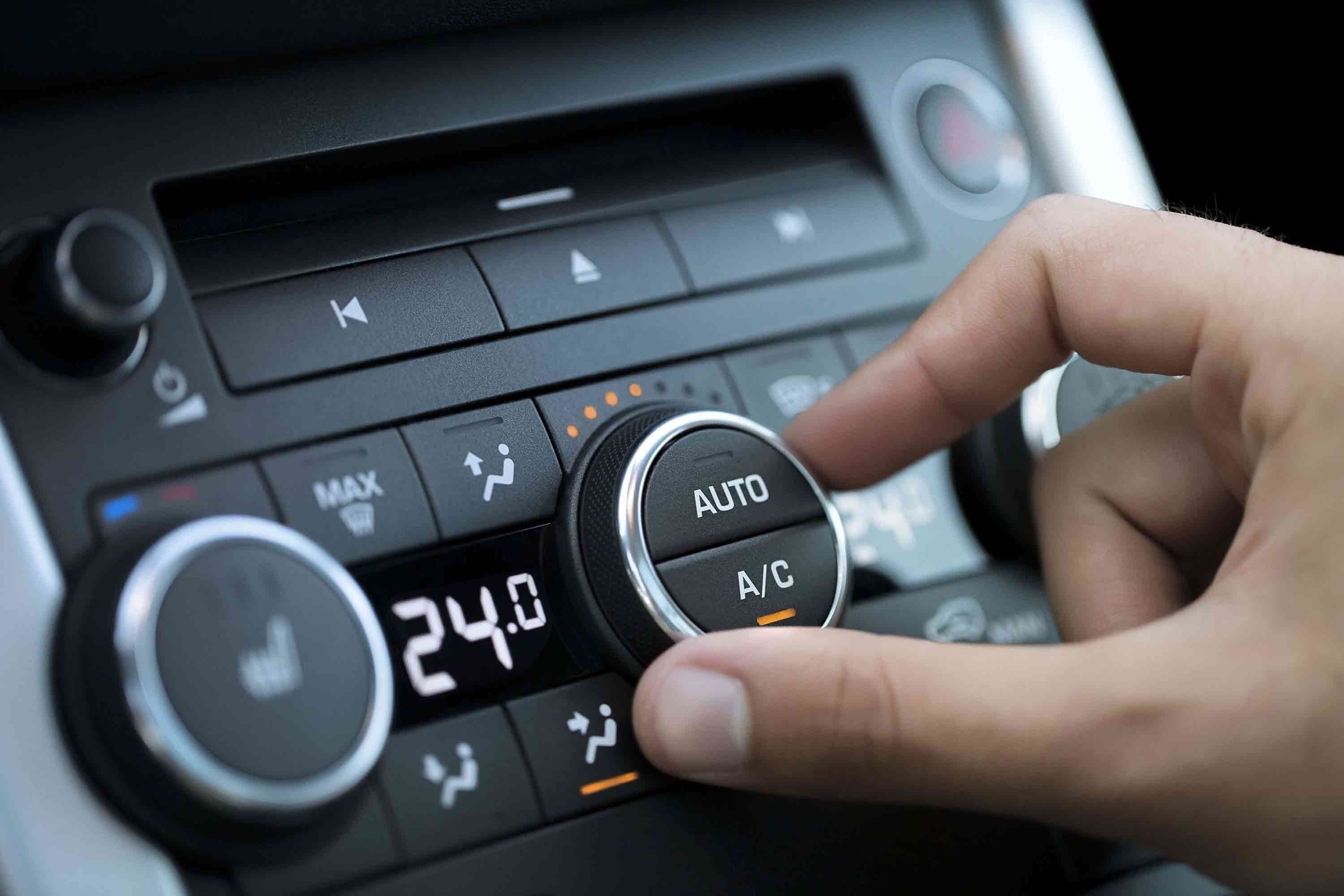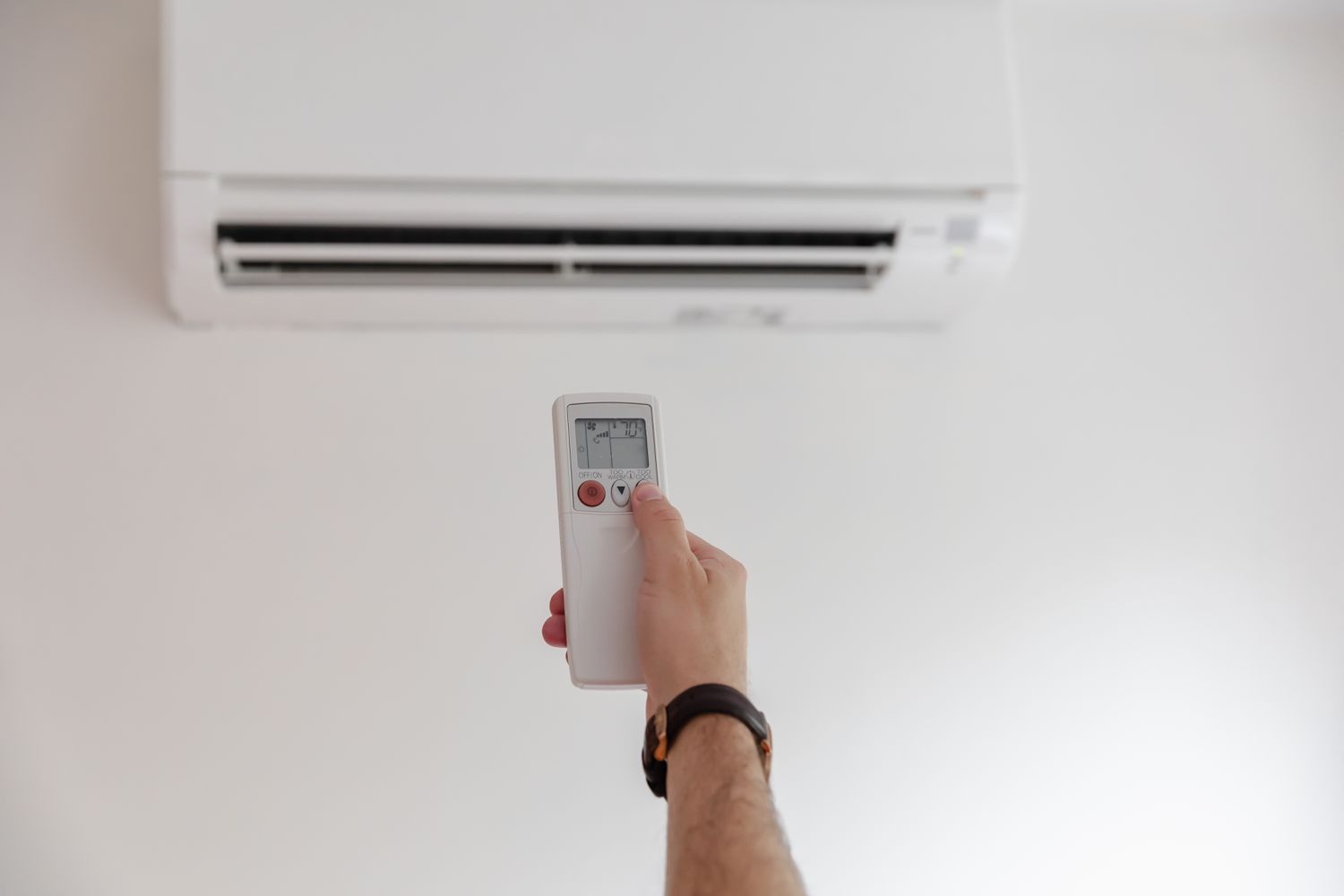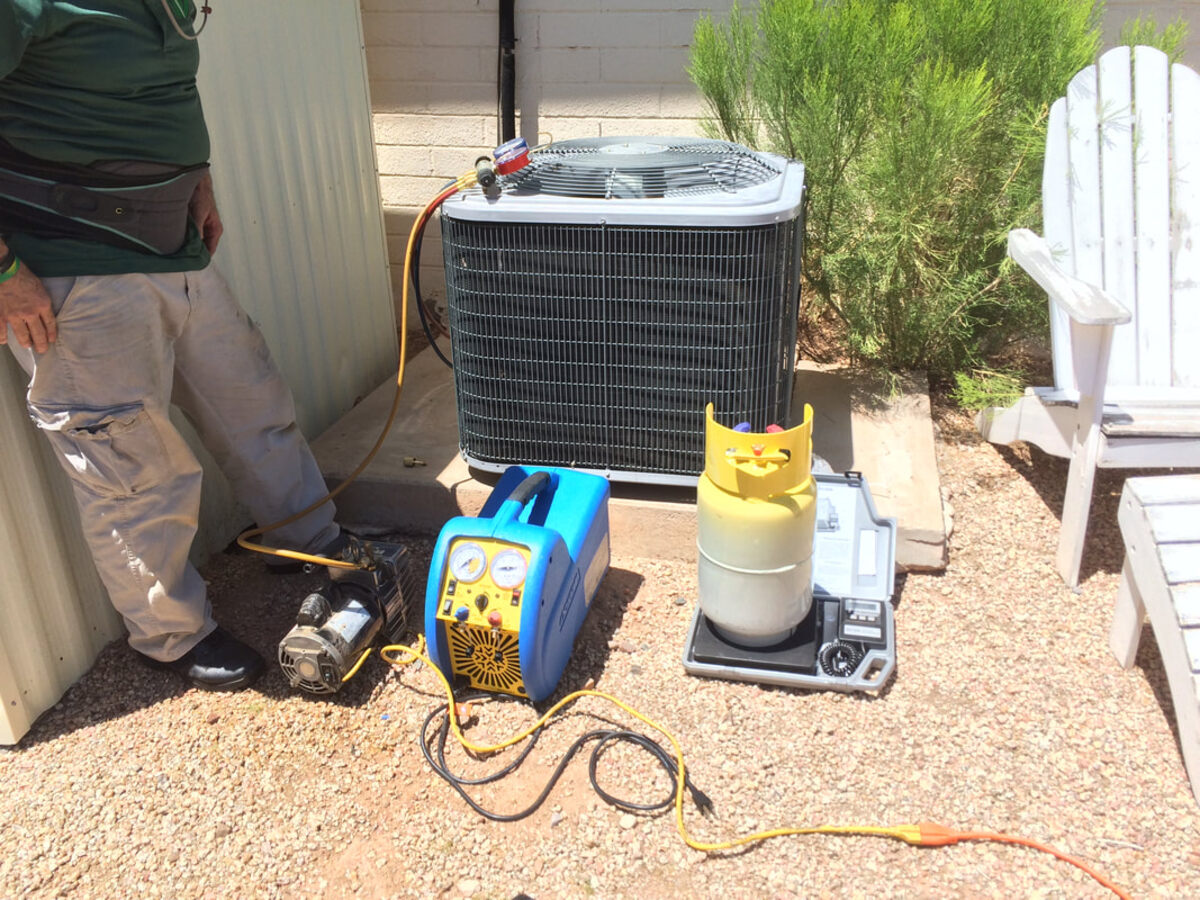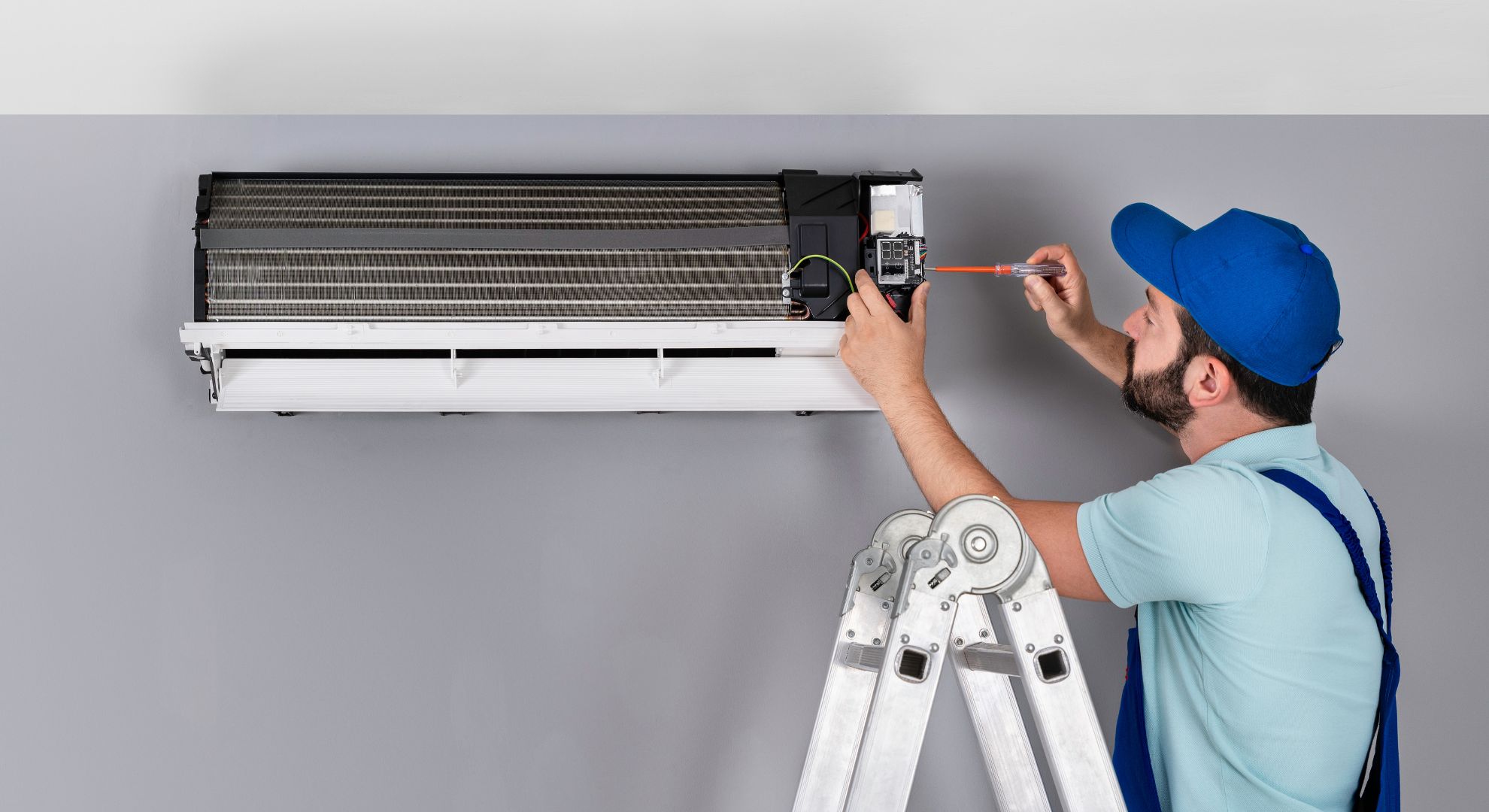Home>Home Maintenance>How Does Geothermal Air Conditioning Work
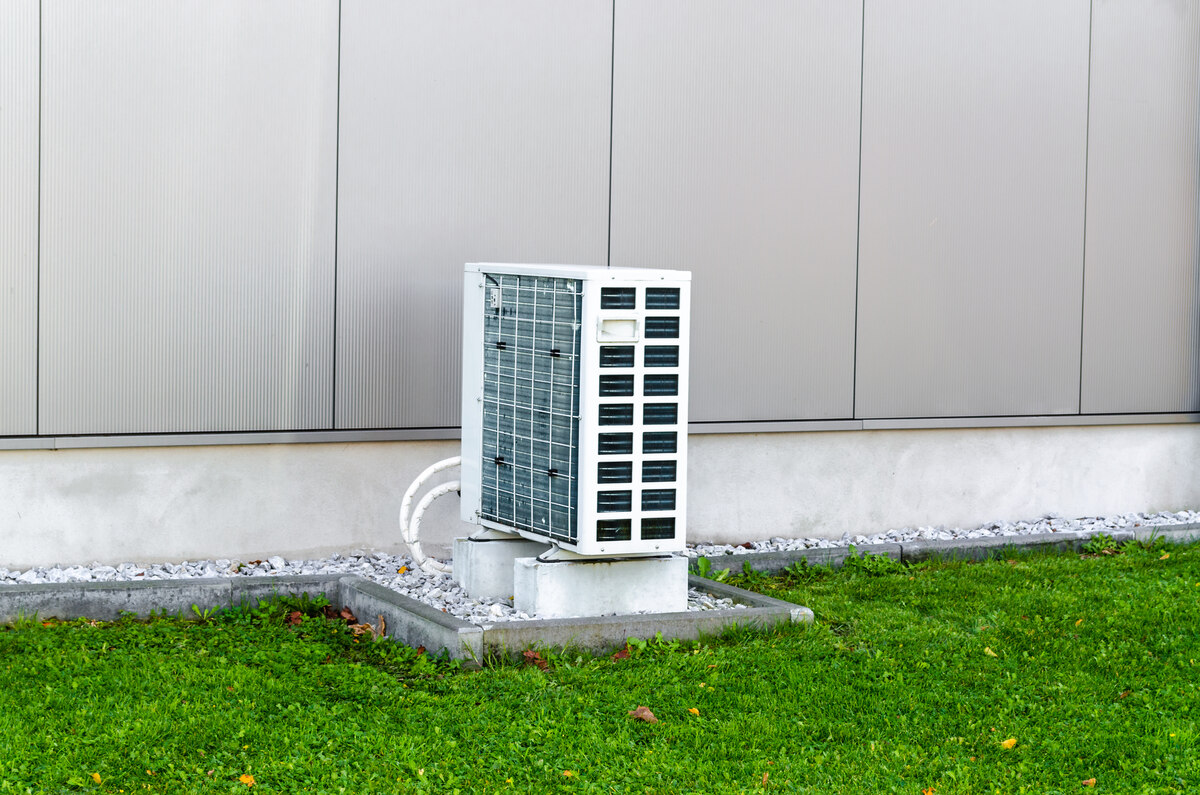

Home Maintenance
How Does Geothermal Air Conditioning Work
Modified: March 6, 2024
Discover the inner workings of geothermal air conditioning and how it can improve your home's efficiency and comfort. Get expert insights and tips on home maintenance for optimal performance.
(Many of the links in this article redirect to a specific reviewed product. Your purchase of these products through affiliate links helps to generate commission for Storables.com, at no extra cost. Learn more)
Introduction
When it comes to keeping our homes comfortable, one of the key factors is maintaining a well-regulated temperature. Air conditioning systems have become a common feature in homes all over the world, providing much-needed relief from scorching summers or chilly winters. However, traditional air conditioning systems often come with certain drawbacks, such as high energy consumption and dependence on fossil fuels.
That’s where geothermal air conditioning comes into play. By harnessing the natural heat from the Earth, geothermal air conditioning systems offer a sustainable and energy-efficient solution for cooling our homes. This innovative technology utilizes the stable temperatures found below the Earth’s surface to provide a more environmentally friendly and cost-effective way to regulate indoor temperatures.
So, how does geothermal air conditioning work, and what are its advantages and disadvantages? In this article, we will explore the ins and outs of geothermal air conditioning systems, their components, working principles, installation, maintenance, and cost considerations. Whether you are a homeowner looking for a greener alternative to traditional air conditioning or simply curious about the technology, this article will provide you with valuable insights into the world of geothermal air conditioning.
Key Takeaways:
- Geothermal air conditioning uses the Earth’s natural heat to cool and heat homes, reducing energy consumption and environmental impact while providing year-round comfort.
- While geothermal air conditioning has higher upfront costs and maintenance needs, it offers long-term energy savings, sustainability, and increased home value.
Read more: How Does Marine Air Conditioning Work
What is Geothermal Air Conditioning?
Geothermal air conditioning is a system that utilizes the constant temperature of the Earth to cool or heat a home. Unlike conventional air conditioning systems that rely on outside air to regulate the indoor temperature, geothermal systems tap into the stable temperatures found below the Earth’s surface to provide a more efficient and sustainable solution. This technology takes advantage of the fact that the temperature below the Earth’s surface remains relatively constant, regardless of the weather conditions above ground.
The heart of a geothermal air conditioning system is the geothermal heat pump. This pump extracts heat from the ground during warm weather and transfers it into the home to cool it down. During cold weather, the process is reversed, and the heat is extracted from the home and transferred back into the ground.
Unlike traditional air conditioning systems that use electricity to generate cool air, geothermal air conditioning systems make use of the Earth’s natural heat. This reduces the amount of electricity consumed, making geothermal air conditioning a more eco-friendly and cost-effective option.
In addition to cooling and heating, geothermal air conditioning systems can also provide hot water for domestic use. This is achieved through a desuperheater, which utilizes excess heat from the cooling process to warm the water. This feature can further enhance the overall energy efficiency of a geothermal system.
It’s important to note that geothermal air conditioning systems are different from geothermal power plants, which generate electricity by harnessing heat from deep within the Earth. Geothermal air conditioning systems focus solely on providing heating and cooling for residential or commercial buildings.
Now that we have a basic understanding of what geothermal air conditioning is, let’s delve deeper into its components and how they work together to create a comfortable indoor environment.
Components of a Geothermal Air Conditioning System
A geothermal air conditioning system consists of several key components that work together to regulate the temperature of a home. Understanding these components will help us grasp the functioning of geothermal air conditioning systems. Here are the main components:
- Geothermal Heat Pump: This is the central component of the system and is responsible for extracting and transferring heat. It is typically located indoors and contains a compressor, condenser, evaporator, and refrigerant. The heat pump uses the stable temperature of the Earth to cool or heat the air as required.
- Ground Loop System: The ground loop system consists of a network of pipes buried underground, either horizontally or vertically. These pipes are filled with a heat transfer fluid, such as water or antifreeze. The fluid circulates through the pipes and absorbs heat from the ground during the cooling mode or releases heat into the ground during the heating mode.
- Heat Distribution System: The heat distribution system is responsible for distributing the conditioned air throughout the home. This system can include ductwork, vents, registers, and fans. In some cases, radiant heating systems or hydronic (water-based) systems may be used for heat distribution.
- Desuperheater: This optional component utilizes excess heat from the cooling process to heat domestic water. It provides hot water for everyday use, reducing the need for a separate water heater and increasing the overall efficiency of the system.
- Thermostat: The thermostat serves as the control center of the geothermal air conditioning system. It allows homeowners to set and adjust the desired temperature, control the system operation, and schedule temperature changes. Modern thermostats may also have Wi-Fi capabilities, enabling remote access and control via smartphone apps.
- Backup Heating System: In regions with extremely cold climates, a backup heating system is often installed alongside the geothermal system to provide additional heating when needed. This backup system can be powered by electricity, natural gas, or propane and is activated when the geothermal system alone cannot meet the heating demand.
These components work in harmony to provide efficient and reliable cooling and heating for a home. The geothermal heat pump extracts heat from the ground or transfers heat into the ground, utilizing the stable temperature below the Earth’s surface. The ground loop system facilitates the exchange of heat between the heat pump and the Earth, while the heat distribution system ensures that the conditioned air is evenly distributed throughout the home.
Now that we understand the components of a geothermal air conditioning system, let’s dive into the working principle of how this innovative technology operates.
Working Principle of Geothermal Air Conditioning
The working principle of geothermal air conditioning is based on the fact that temperatures below the Earth’s surface remain relatively constant throughout the year. This stability allows geothermal systems to efficiently extract heat from the ground during the cooling mode or transfer heat into the ground during the heating mode. Let’s explore how geothermal air conditioning works in both modes:
Cooling Mode: During the summer months, when the indoor temperature needs to be cooled, the geothermal heat pump extracts heat from the air inside the home and transfers it to the ground. Here’s a breakdown of the process:
- The geothermal heat pump circulates a heat transfer fluid, such as water or antifreeze, through the underground pipes of the ground loop system. As the fluid travels through the pipes, it absorbs heat from the surrounding soil.
- The heated fluid returns to the heat pump, which contains a compressor, condenser, and evaporator. The compressor pressurizes the fluid, causing it to release its heat energy.
- The heat energy is transferred to the cooler air in the house as the fluid passes through the condenser. This cools down the air and removes moisture, resulting in a comfortable indoor environment.
- The cooled air is then distributed throughout the home using a heat distribution system, such as ductwork, vents, and registers.
- The heat transfer fluid, now cooled, returns to the ground loop system to absorb more heat, and the process continues until the desired temperature is reached.
Heating Mode: In the winter months, when the indoor temperature needs to be heated, the geothermal heat pump reverses the process and transfers heat from the ground to the air inside the home. Here’s how it works:
- The geothermal heat pump circulates the heat transfer fluid through the ground loop system, where it absorbs heat from the Earth.
- The heated fluid is then compressed by the heat pump’s compressor, raising its temperature further.
- The now hot fluid passes through the condenser, where it transfers its heat energy to the air in the house.
- The warm air is distributed throughout the home via the heat distribution system, providing a comfortable indoor temperature.
- The cooled heat transfer fluid returns to the ground loop system to absorb more heat, and the cycle repeats until the desired temperature is achieved.
By leveraging the natural heat from the Earth, geothermal air conditioning systems consume less energy than traditional systems, resulting in lower utility bills and reduced environmental impact. Additionally, the stable temperature below the Earth’s surface ensures consistent and reliable operation throughout the year.
In the next section, we will explore the advantages and disadvantages of geothermal air conditioning systems to provide a comprehensive overview of this technology.
Advantages of Geothermal Air Conditioning
Geothermal air conditioning systems offer several advantages over traditional air conditioning systems. Let’s take a closer look at the benefits of opting for geothermal air conditioning:
- Energy Efficiency: Geothermal systems are highly energy-efficient, contributing to significant energy savings. By utilizing the stable temperature below the Earth’s surface, these systems require less electricity to cool or heat a home compared to conventional systems. This leads to lower utility bills and reduced environmental impact.
- Sustainability: Geothermal air conditioning relies on renewable energy from the Earth, making it a sustainable option. Unlike traditional systems that burn fossil fuels or consume large amounts of electricity, geothermal systems use the natural heat energy present in the ground, leaving a smaller carbon footprint. This helps to combat climate change and reduce greenhouse gas emissions.
- Durability: Geothermal systems have a longer lifespan compared to traditional air conditioning systems. The underground components, such as the pipes of the ground loop system, are designed to last for several decades with minimal maintenance. In contrast, above-ground components like compressors or condensers tend to wear out faster. However, with proper maintenance, the overall lifespan of a geothermal system can exceed 20 years.
- Year-Round Comfort: Geothermal air conditioning systems can provide both cooling and heating capabilities, ensuring comfortable indoor temperatures throughout the year. Whether it’s scorching summers or freezing winters, these systems can efficiently regulate the temperature inside your home, keeping you comfortable no matter the season.
- No Outdoor Units: Unlike traditional air conditioning systems that require an outdoor unit, geothermal systems do not have any bulky equipment taking up space in your yard. The components of geothermal systems are typically located indoors or underground, resulting in a cleaner and more aesthetically pleasing outdoor space.
- Quiet Operation: Geothermal air conditioning systems operate quietly, offering a peaceful environment inside the home. Unlike traditional systems that can produce loud noise, geothermal systems have most of their equipment located indoors, minimizing noise disruptions.
- Increased Home Value: Installing a geothermal air conditioning system can increase the value of your home. As energy efficiency and sustainability become more important factors for homeowners, properties equipped with geothermal systems may have an edge in the real estate market and attract potential buyers.
These advantages make geothermal air conditioning an attractive option for homeowners looking to reduce their carbon footprint, save on energy costs, and enjoy consistent comfort throughout the year. However, it’s important to consider the potential drawbacks of geothermal systems, which we will explore in the next section.
Geothermal air conditioning works by using the stable temperature of the earth to cool and heat air. A series of pipes filled with water or refrigerant are buried underground, and the earth’s temperature is used to exchange heat with the air, providing efficient cooling and heating for your home.
Disadvantages of Geothermal Air Conditioning
While geothermal air conditioning systems offer numerous benefits, it’s important to consider their potential disadvantages before deciding to install one. Here are some of the drawbacks associated with geothermal air conditioning:
- High Initial Cost: Geothermal systems typically have a higher upfront cost compared to traditional air conditioning systems. The installation process involves drilling or excavating to install the ground loop system, which can significantly increase the initial expenses. However, it’s important to note that the long-term energy savings can offset these upfront costs over time.
- Requirement of Adequate Space: Geothermal systems require sufficient space for the ground loop system. Horizontal systems need a larger area of land for installation, while vertical systems require drilling boreholes, which may not be feasible for every property. It’s crucial to assess the available space on your property to determine if it can accommodate the system installation.
- Potential for Ground Loop Damage: The ground loop system of a geothermal air conditioning system is buried underground, which means there is a possibility of damage to the pipes from external factors, such as shifting soil, tree roots, or construction work. Repairing or replacing damaged pipes can be costly and disruptive.
- System Design Complexity: Designing a geothermal system requires careful consideration of factors such as the size of the property, soil conditions, and heating and cooling load calculations. It’s crucial to work with experienced professionals who can design an efficient system tailored to your specific needs. Improper design can result in decreased system performance or inadequate heating and cooling capabilities.
- Reliance on Electricity: While geothermal systems are more energy-efficient than traditional systems, they still require electricity to power components such as the heat pump and the distribution system. In areas where the electricity grid relies on non-renewable sources, the environmental benefits of geothermal systems may be somewhat diminished.
- Maintenance Requirements: Geothermal systems require regular maintenance to ensure optimal performance. This includes inspections, cleaning of filters, and periodic checks of the heat pump and other components. While maintenance needs are generally minimal, it’s important to factor in the cost and effort of routine servicing.
Although geothermal air conditioning systems have their drawbacks, many homeowners still find the long-term benefits outweigh the initial challenges. By carefully considering these disadvantages and consulting with professionals, you can make an informed decision about whether a geothermal system is the right choice for your home.
In the next sections, we will discuss the installation and maintenance of geothermal air conditioning systems, as well as the cost considerations associated with them.
Installation and Maintenance of Geothermal Air Conditioning Systems
Installing a geothermal air conditioning system requires careful planning and professional expertise. Here are the key aspects to consider during the installation process:
- Site Assessment: Before installation, it’s crucial to conduct a thorough site assessment to determine the suitability of the property for a geothermal system. Factors such as soil conditions, available space, and accessibility for drilling or excavation must be evaluated. Working with experienced geothermal contractors can help ensure an accurate assessment.
- Design and System Sizing: A proper design and system sizing are essential for efficient operation and optimal performance. Professionals will consider factors such as the size of the property, heating and cooling load calculations, and the best type of ground loop system (horizontal or vertical) for the site. The design process should also factor in the climate and local regulations.
- Ground Loop Installation: The ground loop system is one of the critical components of a geothermal system. The installation method depends on the available space and the chosen type of ground loop system. Horizontal systems require trenches to be dug, while vertical systems involve drilling boreholes. This process requires specialized equipment and experienced contractors to ensure proper installation and minimize potential disruption.
- Indoor Component Installation: The indoor components of the geothermal system, including the heat pump, heat distribution system, and controls, need to be installed properly. This may involve retrofitting existing ductwork or installing new ductwork for effective air distribution. Work with a qualified HVAC contractor who has experience with geothermal systems to ensure a seamless installation.
- Commissioning and Testing: Once the installation is complete, the geothermal system needs to be thoroughly tested and commissioned to ensure it is functioning correctly. This includes checking the heat exchange capability, verifying proper refrigerant charge, and testing the controls and thermostats for accurate operation. The installer should conduct these tests and provide guidance on operating the system efficiently.
Maintenance of geothermal air conditioning systems plays a vital role in their long-term performance. While geothermal systems are generally low maintenance, regular upkeep is necessary. Here are some maintenance considerations:
- Filter Cleaning and Replacement: The filters in the heat distribution system should be cleaned or replaced regularly to ensure proper airflow and maintain indoor air quality. This is a simple maintenance task that can typically be done by the homeowner.
- Annual Inspections: It is advisable to have the geothermal system inspected annually by a professional technician. They can check for any potential issues, clean the components, and ensure efficient operation.
- System Checks: Periodic checks of the heat pump, controls, and sensors are important to ensure they are functioning correctly. This can help detect any potential issues and prevent costly repairs or system breakdowns.
- Ground Loop Integrity: Monitoring the integrity of the ground loop system is vital. Regular inspections can help identify any damage or leaks in the pipes and take necessary actions to remedy the situation.
- Professional Servicing: It’s recommended to engage a professional technician who specializes in geothermal systems to perform more comprehensive maintenance, such as inspecting refrigerant levels, checking electrical connections, and conducting performance tests.
By following proper installation procedures and routine maintenance, you can ensure that your geothermal air conditioning system operates efficiently and lasts for many years to come. Now let’s move on to discussing the cost considerations associated with geothermal air conditioning systems.
Cost Considerations for Geothermal Air Conditioning
When considering geothermal air conditioning for your home, it’s important to understand the various cost factors involved. While geothermal systems offer long-term savings, they do come with higher upfront costs compared to traditional air conditioning systems. Here are the key cost considerations:
- Installation Costs: The installation costs of a geothermal air conditioning system can vary depending on factors such as the size of the property, the type of ground loop system (horizontal or vertical), ground composition, and accessibility. The drilling or excavation required for the installation of the ground loop system can significantly impact the overall installation cost.
- Equipment Costs: The cost of the geothermal heat pump and other indoor components, such as the air distribution system and controls, should be taken into account. These costs can vary depending on the size and efficiency of the system and the chosen brand or manufacturer.
- Maintenance Costs: Geothermal systems generally have lower maintenance costs compared to traditional HVAC systems. However, it’s important to budget for routine inspections, filter replacements, and occasional professional servicing to ensure optimal performance and longevity of the system.
- Energy Savings: One of the significant advantages of geothermal air conditioning is the potential for energy savings. These savings can vary depending on factors such as the climate, the efficiency of the system, and the cost of electricity or other energy sources in your area. Consider estimating the potential energy savings over the lifespan of the system to determine the long-term cost benefits.
- Financial Incentives: In some regions, there may be financial incentives, such as tax credits, rebates, or grants, available for installing a geothermal system. These incentives can help offset the initial installation costs and improve the overall cost-effectiveness of the system. Research local programs and consult with professionals to determine eligibility for such incentives.
- Return on Investment: When evaluating the cost of a geothermal system, it’s important to consider the return on investment (ROI). While the upfront costs may be higher, the long-term energy savings and potential increase in home value can contribute to a favorable ROI. Assess the estimated payback period and potential savings over the system’s lifespan to determine the financial viability of the system for your specific circumstances.
It’s worth noting that while geothermal systems have higher initial costs compared to traditional systems, they offer long-term benefits, including energy savings, reduced carbon footprint, and increased comfort. By making a financial plan and considering the potential cost savings and incentives available, you can make an informed decision about the feasibility of geothermal air conditioning for your home.
Now, let’s summarize the key points we’ve covered and conclude our discussion on geothermal air conditioning.
Conclusion
Geothermal air conditioning systems provide a sustainable and energy-efficient solution for maintaining comfortable indoor temperatures in our homes. By tapping into the stable temperatures below the Earth’s surface, these systems offer several advantages over traditional air conditioning. They can effectively cool and heat homes throughout the year, reduce energy consumption, lower utility bills, and minimize environmental impact.
Understanding the components and working principle of geothermal air conditioning systems is crucial in realizing their potential benefits. The geothermal heat pump, ground loop system, heat distribution system, and thermostat all work together to create a comfortable indoor environment while utilizing the Earth’s natural heat energy.
While there are some cost considerations and potential drawbacks to installing geothermal systems, such as higher upfront costs, space requirements, and maintenance needs, the long-term savings and environmental benefits often outweigh these challenges. Proper installation, routine maintenance, and careful consideration of factors such as site suitability, system design, and financial incentives are crucial for maximizing the performance and efficiency of geothermal systems.
Geothermal air conditioning offers homeowners an opportunity to not only reduce their carbon footprint but also increase the value and comfort of their homes. By harnessing the Earth’s natural heat, we can create a more sustainable future while enjoying the benefits of efficient and reliable cooling and heating.
If you’re considering geothermal air conditioning for your home, consult with professionals in the field who can assess your specific needs, provide accurate cost estimates, and guide you through the installation and maintenance process. By making an informed decision and investing in geothermal air conditioning, you can contribute to a greener world while enjoying comfortable indoor temperatures year-round.
Frequently Asked Questions about How Does Geothermal Air Conditioning Work
Was this page helpful?
At Storables.com, we guarantee accurate and reliable information. Our content, validated by Expert Board Contributors, is crafted following stringent Editorial Policies. We're committed to providing you with well-researched, expert-backed insights for all your informational needs.
